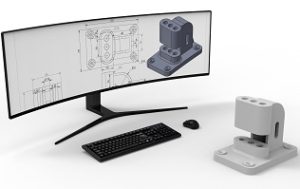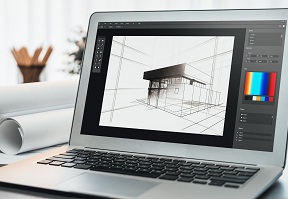
Behind every product, component, part, building, electronic device, and highway, there is a drawing and plan to create it. Today’s drafting professionals use the latest computer-aided drafting software to do the work. This type of software is amazingly flexible because drawings can be adjusted and modified quickly as needed. Contact us today to learn more about our computer-aided drafting training.
Anyone seeking a career in drafting will find there are many options in training programs and career paths. If you are ready to train for your first drafting job, Take a look at our Drafting & Design Technology (AOS) Associate In Occupational Studies Degree Program and prepare yourself for your future career.
Computer-Aided Drafting Is An Industry Staple
All products begin with simple ideas that are put onto paper sketches or computer software. All companies and industries that create products of any type need someone to create visuals of them. Drafting persons use notes, sketches, and specifications to begin the process. Through collaboration with designers, architects, engineers, or supervisors, the drawings come to life.
The essential tools for creating visual representations are various forms of computer-aided design (CAD) and computer-aided design and drafting (CADD) software. Their benefits are:
- Interactive graphics programs
- Create, modify, analyze, or optimize designs
- Create technical drawings
- Improve design quality
- Increase designer productivity
- Improve communications through documentation
Another benefit of computer software that is forgotten about is that you do not erase changes on paper and start another drawing. You simply change or modify the design digitally as many times as you want without showing erasure marks.
Types Of Computer-Aided Educational And Training Programs
 Drafting and design specialists train for their careers in several ways. Students must select the educational and training that matches their career aspirations, including:
Drafting and design specialists train for their careers in several ways. Students must select the educational and training that matches their career aspirations, including:
- A Certificate in Drafting and Design is typically a one-year or less training program that teaches basic concepts and skills without going into specializations.
- A Technical College Associate Degree provides basic and advanced concepts and skills for entry-level positions in two years or less with limited general education courses.
- A Community College Associate Degree is typically a two-year study of drafting and design concepts and skills with numerous general education courses.
- Industry Certifications provide advanced training to help workers obtain better jobs and income through improved qualifications.
| “Behind every product, component, part, building, electronic device, and highway, there is a drawing and plan to create it.” |
What You Learn In Associate Degree Drafting Programs
The most popular track to obtain a drafting and design education is by graduating from a technical college training program. In it, you gain these types of skills and knowledge:
- Produce new drawings by interpreting data from field notes and measurements
- A sound understanding of engineering terminology and graphic engineering data
- Thorough study of pictorial drawing techniques and assembly drawings
- Basic concepts of their chosen drafting specializations
- Working knowledge of and skills in using AutoCAD and CAD software
- Skills in using Windows Operating Systems to produce drawings
- Success skills and technical writing for communication on the job
- Practical mathematics including general math, algebra, geometry, and trigonometry
Students also learn by solving engineering drawing problems and participating in demonstrations, lectures, and laboratory exercises. They receive hands-on training based on real-world projects. Studies are individualized for students and progress is monitored with assignments, quizzes, and laboratory evaluations.
Specific Career Paths In Computer-Aided Drafting
 A career in computer-aided drafting and design provides numerous paths to meet students’ interests. The most common types of drafting positions include:
A career in computer-aided drafting and design provides numerous paths to meet students’ interests. The most common types of drafting positions include:
- Aeronautical entails drawing planes, helicopters, and other spacecraft
- Architectural involves creating plans for houses, buildings, and offices
- Civil entails drawing highways, dams, bridges, and canals
- Electrical involves creating building wiring and electronic schematics
- Furniture entails creating tables, chairs, couches, and desks
- Landscaping creates plans for trees, flowers, water features, and sidewalks
- Mechanical involves drawing parts, components, tools, and machinery
- Sheet-Metal creates mechanical drawings of thin pieces of metal
- Shipbuilding involves plans for boats, ships, submarines, or diving bells
All these specialties begin with basic drafting and design education found in an associate degree college program. Additional on-the-job training will be required for some of these options.
What Employers Expect Of Drafting Professionals
Employers expect new drafters and designers to apply their acquired knowledge and skills to the best of their abilities on a variety of projects. They must also be detail-oriented, self-starters, and have a desire to support their company’s goals. Learn to meet your work responsibilities by enrolling in and graduating from a competitive Computer-Aided Drafting Training program.
For more information about graduation rates, the median debt of students who completed the program, and other important information, please visit our website: https://iticollege.edu/disclosures/

